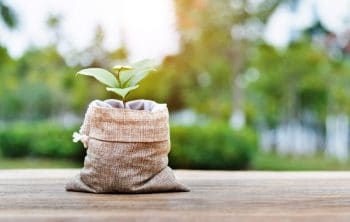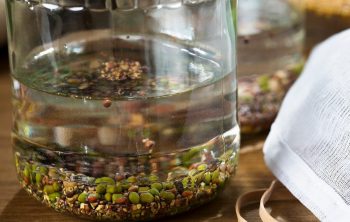When germinating seeds it’s important to know when to put light on germinated seeds to ensure they have the right amount at the proper time.
When planting seeds, it is very important to make sure that they germinate properly. When germinating seeds, it is important to know when to put light on them to ensure they have the right amount at the proper time. The following is a list of guidelines on when to put light on germinated seeds.
Guidelines On When To Put Light On Germinated Seeds
When putting light on germinated seeds indoors it is best to know exactly what to do and how to do it. Here are some guidelines to help you get started.
Put The Light On When Seeds Are Germinating
It is important to note that if you are growing seeds indoors in a warm climate, the temperature will most likely be too high for the seedlings to survive. If you are growing seeds in a warm climate, it may be best to put them under a grow light for two weeks and then switch to normal indoor lighting. However, if you are growing seeds in a cooler climate, it is best to put them under a grow light as soon as they have sprouted. Start seeds on the first day of germination. Germinated seeds should be placed in a moist environment with constant light.
Put The Light On Alternate Days – When To Put Light On Germinated Seeds
Keep the light on from the time that the seeds sprout until about 3 weeks after. After this time, you can remove the light for two weeks before switching it back on. You can either leave the light on for the entire two weeks or turn it off for the first few days. This will depend on how much light you have available. If you do not have enough light for the plants to get enough light, leave the light on and use a timer to turn it off at night. If you do not have a timer, just keep the light on until it’s time to turn it off.
Ensure You Have The Right Amount Of Light For Your Plants
You want them to get between 10-12 hours of sunlight every day. If you have an LED light, you should be able to get 10-12 hours of light per day with the minimum amount of light. If you have a fluorescent light, you should be able to get about 12-14 hours of light per day with the minimum amount of light.
LED Grow Lights for Indoor Plants – JUEYINGBAILI 80W Full Spectrum Plant Lights
Place The Light Where It Produces Enough Warmth For The Plant
Keep in mind that if the light is too bright, it can burn the leaves and cause problems. If you are using fluorescent light, be sure to place the light so that the light is shining directly onto the plant. It’s also important to ensure that the light is not too close to the plant. If it is too close, it can burn the leaves. You should also make sure that the plant has enough air space.
How To Grow Seeds Indoors – When To Put Light On Germinated Seeds
Seeds are ready to be planted when they have sprouted and are no longer hard to the touch. In warm climates, seeds should sprout in two weeks, while in colder climates they may take three weeks. You will know that they are ready to be planted when the seedlings have at least one true leaf. A true leaf is a leaf that has fully developed veins. The plant should also have at least two true leaves before you plant it in a container or in the ground.
You can check the progress of the seedlings by placing them under a grow light. If you see any white or yellow areas on the leaves, the seedlings are not ready yet. If the plants are not ready yet, you can let them continue to germinate for a few more days or until they are ready to be planted. If you have already started growing your seeds and need to change the light, just remove the old light and put the new one on.

Conclusion On When To Put Light On Germinated Seeds
You are now equipped with information on when to put light on germinated seeds and the guidelines to follow. This will help you grow your indoor plants better and manage the grow lights perfectly. Remember to also choose the right to grow lights for your indoor garden and the kind of plants that you are growing.
We hope this information is useful to you and we wish you all the best in your plant growing endeavors.
FAQ’s
What are the 3 stages of germination?
The three stages of germination are
Pre-germination. This stage is characterized by a period of dormancy in which the embryo is not ready to germinate. This stage may be extended for up to several months if necessary.
Germination. This is the stage at which the radicle emerges from the seed coat and starts to grow. The radicle is the first sign of germination. The germ tube may or may not emerge at this time.
Post-germination. This is the stage where the radicle has emerged and the growing embryo develops into a seedling. This stage may last for weeks, months, years or indefinitely.
What seeds require darkness to germinate?
All seeds need light to photosynthesize but they also need darkness to undergo germination.
What color light is best for germinating seeds?
Seeds prefer the blue spectrum of light as it helps to increase photosynthesis. It has been proven that blue light promotes more efficient conversion of light energy to chemical energy and therefore improves the growth of plants.
Can I use LED lights for seedlings?
Yes, but you will need to get an LED light that emits both red and blue light. LED lights are more effective than fluorescent lights because they emit very little heat.

Brian is an avid gardener who loves spending time outdoors. He is passionate about using his green thumb to create beautiful, lush gardens for her friends and family. He finds joy in tending to her garden, trimming plants, and cultivating new species. He enjoys to share his knowledge and experience with others with a similar gardening enthusiasm. Brian is a true nature enthusiast and a has true passion for the outdoors.





